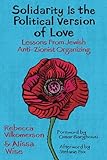There have been two periods in labor history known as “New Unionism”, and it would seem that they are closely linked.
The first began in the mid-1880s, as craft-based structures gave way to industrial unions. The new leaders argued that unions must become more open, visionary and inclusive.
In 1988 women at the Bryant & May match factory in London began what might well be the most significant strike in historyClaire Peytavi, “Annie Besant and the 1888 London Matchgirls Strike,” L’Unité de Formation et de Recherche (U.F.R.) d’Etudes Anglo-Américaines de l’Université Paris X Nanterre, 11 October 2003.: and their success ushered in a new era of expansion in union membership, social ambition and influence. A year later came the London dockers’ strike, and within twelve months membership of the UK’s Trade Union Congress had increased from 670,000 to 1,593,000.
 Although created later, this poster from the U.S. IWW (aka “the Wobblies”) captures the spirit and goals of that first movement wonderfully.
Although created later, this poster from the U.S. IWW (aka “the Wobblies”) captures the spirit and goals of that first movement wonderfully.
It was a period in which unions went beyond reacting to imposed agendas and started developing their own social goals. Labor historian R.A. Leeson described the shift thus:
Two conflicting views of the trade-union movement strove for ascendancy in the nineteenth century: one the defensive-restrictive gild-craft tradition passed down through journeymen’s clubs and friendly societies,… the other the aggressive-expansionist drive to unite all ‘labouring men and women’ for a ‘different order of things’…
Speaking in 1892, W.G. Spence, made the following comments on “The Ethics of New Unionism”:
In the old days labor looked askance at the employer and felt a hatred for him. New Unionism is today looking beyond the employer and fixing its hatred upon the system, which is bad not alone for the worker, but for the employer — which forces the employer to act unjustly even if (they do) not wish to do so.
He continued:
…there was spreading amongst unionists this idea… that they could not affect the improvement they desired by dealing only with the mere question of hours and wages. And so comes what has been termed the “new unionism” — a unionism wide and broad in its aim, and one which will certainly be far-reaching in its effects… We are aiming now at securing an improvement by social and political reforms — and by that means alone a revolution will undoubtedly be effected in time. When I use the word revolution do not misunderstand me — I mean a quiet one. It will be a change from one condition to another.
Revolution? So where does this fit in with early communism, and Marx and Lenin and so forth?
Because of its deeper social agenda, New Unionism was described at the time as “labor socialism”, or “evolutionary socialism”. Friedrich Engels was a champion of the New Unionists:
The old Unions preserve the traditions of the time when they were founded, and look upon the wages system as a once-for-all established, final fact, which they at best can modify in the interest of their members. The new Unions were founded at a time when the faith in the eternity of the wages system was severely shaken… And thus we see now these new Unions taking the lead of the working-class movement generally, and more and more taking in tow the rich and proud, old Unions. …glad and proud I am to have lived to see it.
However, World War One interrupted New Unionism’s evolution. When it was over, leaving many of the traditional power relations shattered, three contending ideologies (soviet, anti-communist and Christian social-democrat) began vying to control the movement.
The Great Split
In 1920 there was a huge split in the labour movement. At the Second Congress of the Comintern, V.I. Lenin proposed “Twenty One Conditions” which must be met in order for communists and socialists to work together (more). In effect, the communists demanded allegiance to the Soviet order. Those who agreed pledged themselves to struggle against any force which was working to reform capitalism.
The same year saw a secondary split as well, with the formation of the “International Federation of Christian Trade Unions” — designed to provide an alternative to the anti-religious trade unions in Europe at the time.
World War Two papered over these divisions for a while, but as soon as it was over the primary dispute — often described in terms of “reform vs revolution” — resurfaced. Within a few years the Cold War had set the split in concrete, and Russian and US-dominated forces were battling in every imaginable way to control the direction of unionism. It was a fracas in which the workers’ voice was generally drowned out.
The effects of 1920 lasted beyond the end of the century. In fact, it might be argued that vestiges of the era’s top-down ideologically-based controls are still evident in some unions today.
However the splits are becoming increasingly irrelevant as the Cold War recedes. In 2006 the original Christian federation (changed and renamed) joined together with the originally anti-communist federation to establish a new international body called the ITUC. The remaining international group, the WFTU (which had pushed the soviet line) has lost more than half of its membership, and is struggling to find a new way forward.
With the effects of these three ideologies subsiding, the drive for social change is again emerging from below. New Unionism is again finding its expression within organised labour, which faces a whole new set of problems: environmental catastrophe, institutionalised conflicts, globalised economics and an increasingly borderless labor market.
We have set up this network to show that the second wave of New Unionism, like its 19th century predecessor, is democratic, rather than bureaucratic, and takes lessons from creative practice (including mistakes!) rather than from ideology. The people involved are those closest to the issues: trade unionists, workers and those labor academics who are engaged in practical research.
So where to now? The movement is still defining itself, and it will be for some years to come. But this time it is happening from the bottom up, rather than the top down. There never was any other way. As the leader of Mexico’s Zapatistas put it: “It is not necessary to conquer the world. It is sufficient to make it new”.
UPDATE on June 16, 2017:
The sentence “Karl Marx was a champion of the New Unionists” should have read “Friedrich Engels was a champion of the New Unionists”.
This has been corrected and the link provided.










